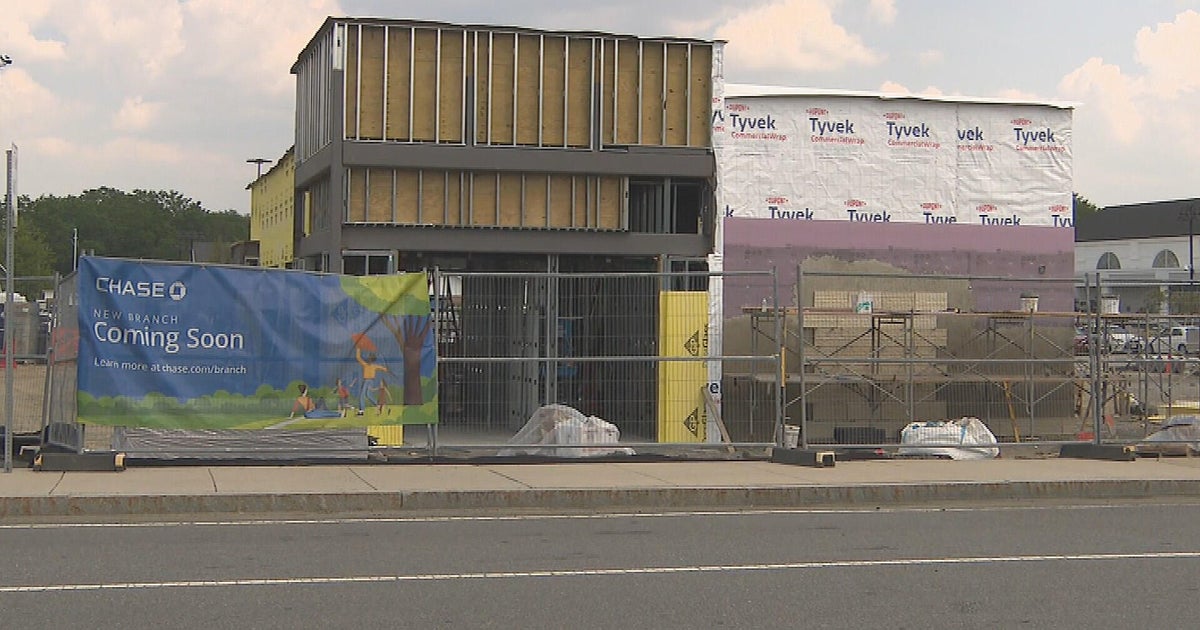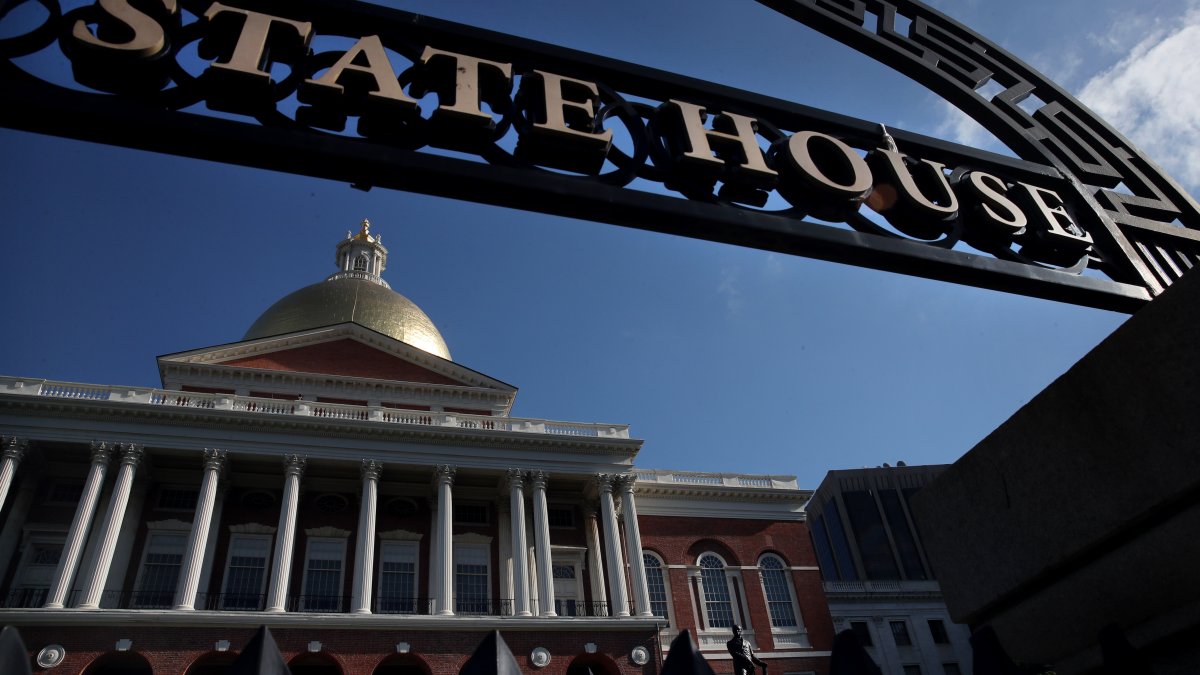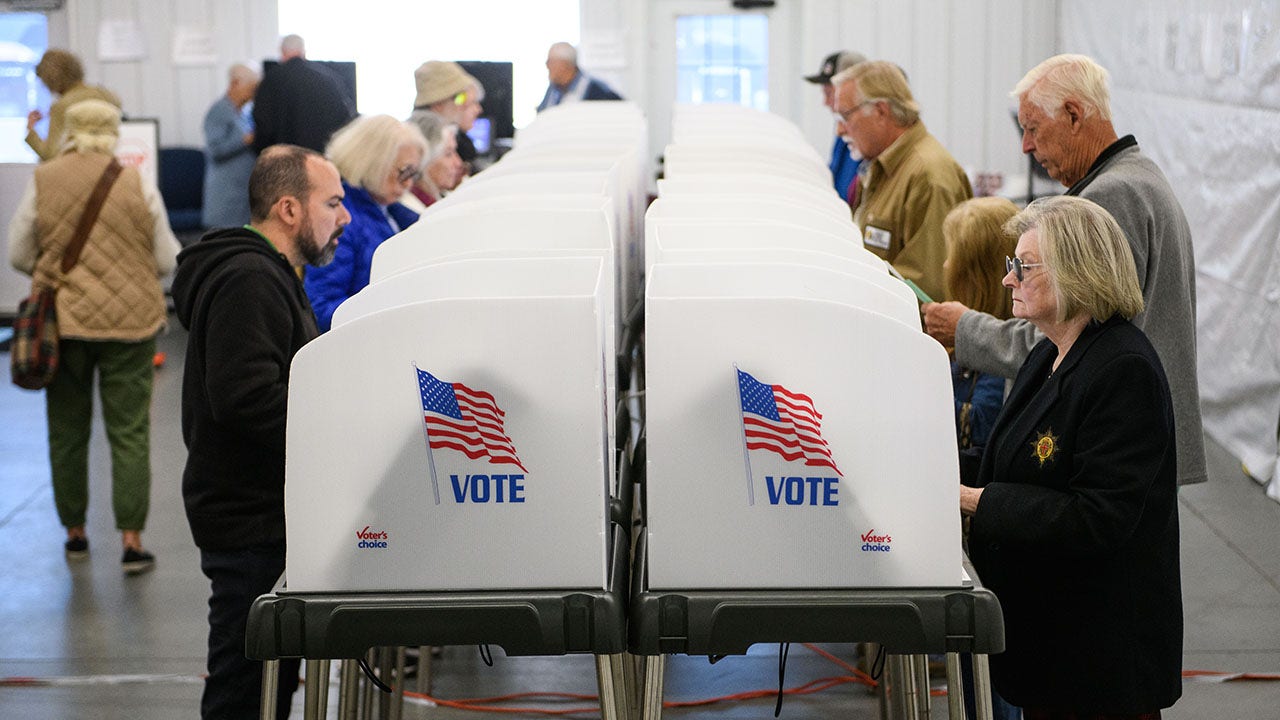Massachusetts
Closed state prison reopened as migrant shelter spurs concern about schooling in a Massachusetts town – The Boston Globe

Norfolk Superintendent Ingrid Allardi said most of the children at the shelter are from Haiti and Venezuela.
She said she recognizes that the shelter is a “significant change for this community,” and acknowledged children from the shelter would have an influence on class sizes. Still, she assured parents that programs would “remain strong and rigorous.”
“We anticipate our schools operating as they always have,” she said.
More than 2,800 students were enrolled in district schools serving Norfolk during the 2023-2024 school year. As it stands, new shelter arrivals would represent roughly a one percent increase in the school population. However, as the shelter grows to full capacity, residents worry that the impact of additional enrollment would be amplified.
Benjamin Sprague, a father of two elementary-aged children, said having children from different cultures at school would have a positive influence on his own children. But he wished that the state would have communicated their plans for the shelter earlier.
“There’s got to be better ways we can do this, instead of putting all the stress on one single town,” Sprague, 42, said before the meeting. “How is one little town supposed to support all these people so they can be successful Americans?”
Some residents were not convinced that an influx of new students would not harm classroom instruction.
“All the time and effort that is needed to properly support our newcomers — that takes a lot of energy,” said Peter Svalbe, a member of the Norfolk School Committee who has two elementary school-age children. “How are we not distracting from our current student needs and preparing for this upcoming school year?”
He was met with applause.
Rich Drolet, superintendent for the King Philip Regional School District, said that the two districts will be hiring four more English Learner teachers, one who will teach at each of the four schools in the district. School leaders also said they had established a summer planning committee to develop educational plans, and that staff is undergoing specialized professional development training.
Last school year, Drolet said, King Philip enrolled 14 students who were living at a hotel in Plainville. “It was a positive experience, although it was challenging at first,” Drolet said. But, he added: “We certainly have concern and trepidation of getting such a large increase in this population of students.”
The situation in Norfolk illustrates the struggle various school systems across Massachusetts, including West Springfield Public Schools and Middleborough Public Schools, have contended with as groups of migrant children living in temporary housing have enrolled in local school districts. Some school officials say their systems lack the necessary means to support the increase in students.

In Norfolk, dozens of residents rallied against migrants being placed in their community when the facility reopened as a shelter. But others also showed support for the new arrivals, decorating “welcome banners” and voicing opposition to the housing of children in the former prison.
At the information session, some parents expressed gratitude to school staff for their preparation to welcome new and existing students. “Thank you to the teachers who are also opening their arms to everybody,” said parent Kristen Stacy.
Norfolk, a town of about 11,660 , is located roughly 30 miles southwest of Boston and has a median household income of more than $182,700, US census data shows — approximately $66,700 higher than the median household income in Norfolk County.
A Globe analysis of state data earlier this year found that relatively few wealthy communities host emergency shelters like the one at Bay State. The majority of these facilities are placed in middle-income towns and cities.
As of Wednesday, the Norfolk shelter housed 39 families, 129 individuals in total, according to Noah Bombard, a spokesperson for the Executive Office of Housing and Livable Communities. Eighteen elementary-aged children, eight high school-aged children, and six middle school-aged children were living at the site as of Wednesday, Bombard said. The state is contracting with Heading Home, an emergency shelter provider offering hundreds of family shelter units in the areas of Boston and Lawrence, to run the Norfolk facility.
For the 2023-2024 school year, Norfolk Public Schools had an enrollment of 1,041 students in the district’s two elementary schools, which serve students in prekindergarten through sixth grade. King Philip Regional School District, which also serves Plainville and Wrentham, enrolled 1,849 students at its middle school and high school during the last school year, according to state data.
Capacity at the Bay State shelter will expand gradually, Bombard said, and the timeline for reaching the population limit at the site depends on various factors, including demand. The state’s emergency shelter system reached Healey’s cap of 7,500 families months ago, and as of Wednesday, there were 731 families on the waitlist to access emergency shelter, Bombard said. Overflow sites like Bay State are offered as shelter to those on the waitlist, but not all families may choose to utilize them, according to the Executive Office of Housing and Livable Communities.
For months, dozens of migrant families, largely from Haiti, had been sleeping overnight at Boston’s Logan International Airport in Terminal E, where scenes of parents cradling their children on air mattresses set out on the floor became commonplace. But as of Tuesday, Healey’s ban on overnight stays at the airport went into effect, and the migrants disappeared from Logan.
Some are now housed at the Bay State facility in Norfolk, Bombard confirmed. Families staying at the Bay State shelter did not have any prior housing.
On Thursday afternoon, about half a dozen young children ran or rode bikes across a playground and soccer field, now set in front of the old correctional center. Still, they played behind a towering chain link fence that made it clear the facility was once a prison, though much of the barbed wire had been removed.
School officials said staff would begin screening and enrolling children from the shelter in August.
Jim Lehan, the chair of Norfolk’s Select Board, who also chairs the King Philip Regional School Committee, said in an interview on Wednesday that there have been conversations among school leaders about the possibility of enrolling children living at the shelter in schools outside districts serving Norfolk. But the decision would have to be made “out of the kindness of the neighboring community to take some of those students,” Lehan said, emphasizing that the state has made clear that they have no authority to force other districts to enroll children from the Norfolk shelter in their schools.
Giulia McDonnell Nieto del Rio can be reached at giulia.mcdnr@globe.com. Follow her @giulia.mcdnr.

Massachusetts
Massachusetts town looking into ICE facility zoning violations after teen described conditions

The New England Regional Headquarters for the U.S. Immigration and Customs Enforcement (ICE) is supposed to be a processing facility where people stay for only hours, and the town of Burlington where the facility is located says that’s how it is zoned. “What I’m just concerned about is fair and humane treatment for anybody in Burlington,” said Mike Espejo, chairman of the Select Board, “and this doesn’t seem like that’s happening.”
Milford teen describes conditions
He tells WBZ-TV the case of Marcelo Gomes da Silva has shined a new light on what is allegedly happening behind the doors. “No one deserves to be down there,” Gomes da Silva told reporters when he posted bail last week. “You sleep on concrete floors, I have to use the bathroom in the open. It’s humiliating.”
He described what he called inhumane conditions for six days, leaving the town now more than concerned.
“We had no idea anything like that was happening,” said Espejo. It is why town officials are now gathering information on the scope of the operations inside the building and whether the ICE facility is violating local zoning laws. “We are checking with our legal counsel to see if we can do any type of zoning enforcement, or health code violation enforcement,” Espejo said. “Anything we can do to just make sure that people are at least being treated humanely.”
Town was told no one held overnight
There was some opposition in the town when the facility first opened in 2008, but residents received assurances that no one would be held overnight. Espejo said they were told the same thing in recent weeks when local officials began inquiries amid rumors.
In a statement ICE tells WBZ-TV, “There are occasions where detainees might need to stay at the Burlington office for a short period that might exceed the anticipated administrative processing time.”
The statement goes on to say, “detainees are given ample food, regular access to phones, showers and legal representation as well as medical care when needed.”
That’s not what Marcelo Gomes da Silva said he experienced. “I haven’t showered in six days. I haven’t done anything,” he said when he was released.
Espejo says it’s a gray area for the town. “It’s a federal facility so we don’t know how much jurisdiction we have over it,” Espejo said. He says town officials feel misled about a building where they believed mostly paperwork was being done.
Massachusetts
Why are banks building so many new branches in Massachusetts?

With money sending apps and online banking, why are so many new bank branches popping up in Massachusetts?
Ever spot a “Space Available for Lease” sign and hope a new café, bookstore or restaurant is coming to town? Excitement builds and then you learn… it’s another bank? It seems to be recent trend in banking and now it’s happening in Massachusetts.
In Needham for instance, a town of about 32,000 people, there are nine bank branches. One of the newest is a Chase Bank that replaced a convenience store which had replaced a Friendly’s restaurant.
“I was hoping it would be a restaurant,” said Eileen Baker, who owns Proud Mary, a gift and fashion boutique in the heart of Needham. “We would love to see little coffee shops; I know a lot of people would love to see a bookshop in Needham. Little specialty foods.”
Baker and many other small business owners thrive when people are drawn downtown by new specialty shops and restaurants. Banks, not so much.
Chase opening 50 new branches
With mobile banking and Venmo, physical banks might seem outdated. But Chase, the country’s largest commercial bank, plans to open 50 new branches in the state by 2027, including brand-new branches in towns like Sudbury and Weston.
“I don’t really understand why there are so many banks,” said one young man outside of the under-construction Chase in Sudbury.
Opening in wealthy neighborhoods
Good question. So, we asked Eric Rosengren, former President of the Federal Reserve Bank of Boston.
“They would only do it because its cost effective,” Rosengren said. “You don’t see it in lower income neighborhoods. You see it in wealthy neighborhoods, because even a few wealthy individuals can provide a significant amount of income coming from the wealth management.”
Rosengren says these often-plush new branches are designed to attract affluent customers who might still value face-to-face financial advice.
Recent surge
This surge is a very recent shift. In fact, nationwide, the total number of bank branches has dropped by 13,000 in the last decade. In 2014 there were about 81,000 U.S. bank branches. In 2023 – for the first time in a long time- there was an uptick in new branches- leaving about 68,000 branches.
Will the trend continue? Most research says younger customers are using mobile banking and very seldom visit their local branch. Will they change their minds once they begin to accumulate wealth? Sound like some financial companies are banking on it.
If you have a question you’d like us to look into, please email questioneverything@cbsboston.com.
Massachusetts
Wealth surtax may generate $3 billion in Mass.

State budget honcho Matthew Gorzkowicz told municipal officials Tuesday that Massachusetts is on track to rake in nearly $3 billion from its surtax on household income greater than about $1 million, more than double the estimate used to craft this year’s budget.
The Department of Revenue reported last month that the state had collected just less than $2.6 billion from the 4% surtax between July 1, 2024, and April 30, 2025, surpassing the $2.46 billion that the surtax generated in fiscal 2024 in just 10 months of fiscal 2025. May and June collections are expected to add to that total, and Gorzkowicz said Tuesday that he now thinks total fiscal 2025 surtax collections “could be closer to $3 billion.”
“We will have the benefit of being able to spend those dollars on education, transportation, as you’ve seen us do with our January supp as part of our transportation package this past year,” the secretary of administration and finance told the Local Government Advisory Commission, referring to the surtax surplus spending bill that is now in conference committee. “We’ll have another opportunity to do that again.”
The Healey administration and legislative Democrats have used conservative collection estimates in the first few years of the surtax, which was approved by voters in 2022. Under the constitution, revenue generated by the surtax can only be used for education or transportation initiatives and the conservative estimating has given lawmakers extra money to dole out separate from the traditional state budget process.
When they built the fiscal 2025 budget, the administration and legislative leaders agreed to spend $1.3 billion in surtax revenue this year. If Gorzkowicz’s estimate proves correct, the Legislature could have as much as $1.7 billion to spend sometime after DOR certifies the full-year surtax collection amount in the fall.
When they agreed on a consensus revenue estimate for fiscal 2026 earlier this year, Gorzkowicz and the Ways and Means Committee chairs mutually estimated the state will collect $2.4 billion from the income surtax in fiscal 2026. But they agreed to spend at most $1.95 billion from that in the annual budget bill, which like the surtax surplus bill is also the subject of conference committee negotiations.
-

 West6 days ago
West6 days agoBattle over Space Command HQ location heats up as lawmakers press new Air Force secretary
-

 World1 week ago
World1 week agoTwo suspected Ugandan rebels killed in Kampala explosion
-

 Politics1 week ago
Politics1 week agoRed state tops annual Heritage Foundation scorecard for strongest election integrity: 'Hard to cheat'
-

 Technology7 days ago
Technology7 days agoiFixit says the Switch 2 is even harder to repair than the original
-

 Movie Reviews1 week ago
Movie Reviews1 week agoStream It Or Skip It: ‘Sinners’ on VOD, Ryan Coogler's ambitious vampire epic set in the segregated South of the 1930s
-

 World1 week ago
World1 week agoEU-Ukraine trade reset: What comes after tariff-free access expires?
-

 Politics1 week ago
Politics1 week agoHawley clashes with UPenn law professor over judicial injunctions
-

 Technology1 week ago
Technology1 week agoAnker’s rugged Bluetooth speaker can clean itself by shaking off dirt














